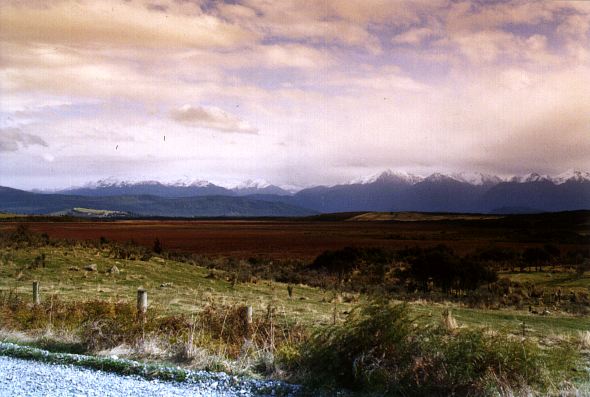string bog on:
[Wikipedia]
[Google]
[Amazon]
 A string bog or string mire is a
A string bog or string mire is a
Canadian Soil Information Service – Local Surface Forms
(accessed on 2014-10-18) * * String bog Ecology {{Hydrology-stub de:Regenmoor#Aapamoore
bog
A bog or bogland is a wetland that accumulates peat as a deposit of dead plant materials often mosses, typically sphagnum moss. It is one of the four main types of wetlands. Other names for bogs include mire, mosses, quagmire, and musk ...
consisting of slightly elevated ridges and islands, with woody plants, alternating with flat, wet sedge
The Cyperaceae () are a family of graminoid (grass-like), monocotyledonous flowering plants known as wikt:sedge, sedges. The family (biology), family is large; botanists have species description, described some 5,500 known species in about 90 ...
mat areas. String bogs occur on slightly sloping surfaces, with the ridges at right angles to the direction of water flow. They are an example of patterned vegetation.
String bogs are also known as aapa moors or aapa mires (from Finnish ''aapasuo'') or Strangmoor (from the German).
A string bog has a pattern of narrow (2–3m wide), low (less than 1m high) ridges oriented at right angles to the direction of drainage with wet depressions or pools occurring between the ridges. The water and peat are very low in nutrients because the water has been derived from other ombrotrophic
Ombrotrophic ("cloud-fed"), from Ancient Greek ὄμβρος (''ómvros'') meaning "rain" and τροφή (''trofí'') meaning "food"), refers to Soil, soils or vegetation which receive all of their water and nutrients from precipitation, rather ...
wetlands, which receive all of their water and nutrients from precipitation rather than from streams or springs. The peat thickness is greater than 1m.
String bogs are features associated with periglacial
Periglaciation (adjective: "periglacial", referring to places at the edges of glacial areas) describes geomorphic processes that result from seasonal thawing and freezing, very often in areas of permafrost. The meltwater may refreeze in ice wedg ...
climates, where the temperature results in long periods of subzero temperatures. The active layer exists as a frozen ground for long periods and melts in the spring thaw. Slow melting produces characteristic mass movement processes and features associated with specific periglacial environments.
See also
* Raised bog *Blanket bog
Blanket bog or blanket mire, also known as featherbed bog, is an area of peatland, forming where there is a climate of high rainfall and a low level of evapotranspiration, allowing peat to develop not only in wet hollows but over large expanses ...
* Flark
* Marsh
In ecology, a marsh is a wetland that is dominated by herbaceous plants rather than by woody plants.Keddy, P.A. 2010. Wetland Ecology: Principles and Conservation (2nd edition). Cambridge University Press, Cambridge, UK. 497 p More in genera ...
References
Further reading
Canadian Soil Information Service – Local Surface Forms
(accessed on 2014-10-18) * * String bog Ecology {{Hydrology-stub de:Regenmoor#Aapamoore